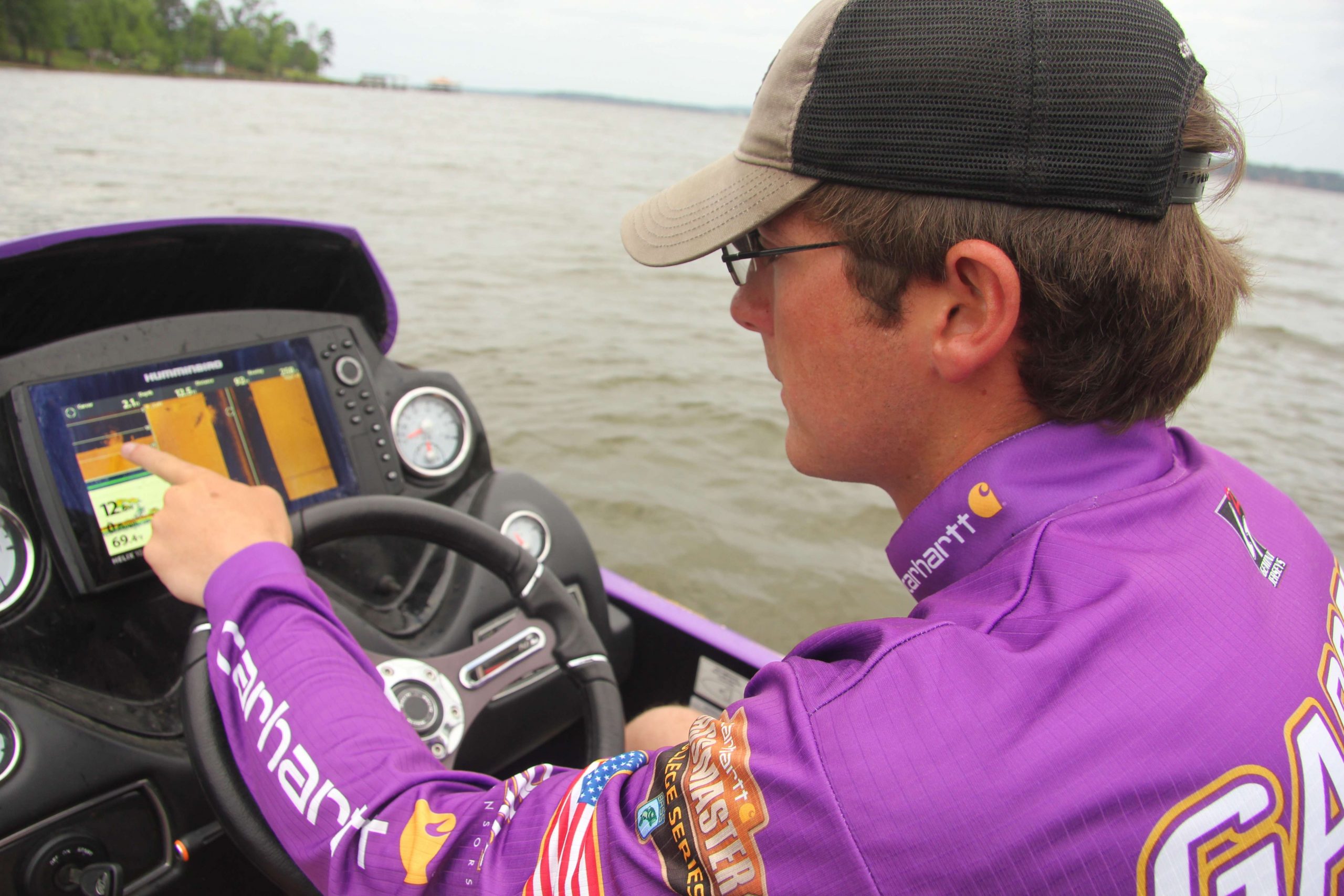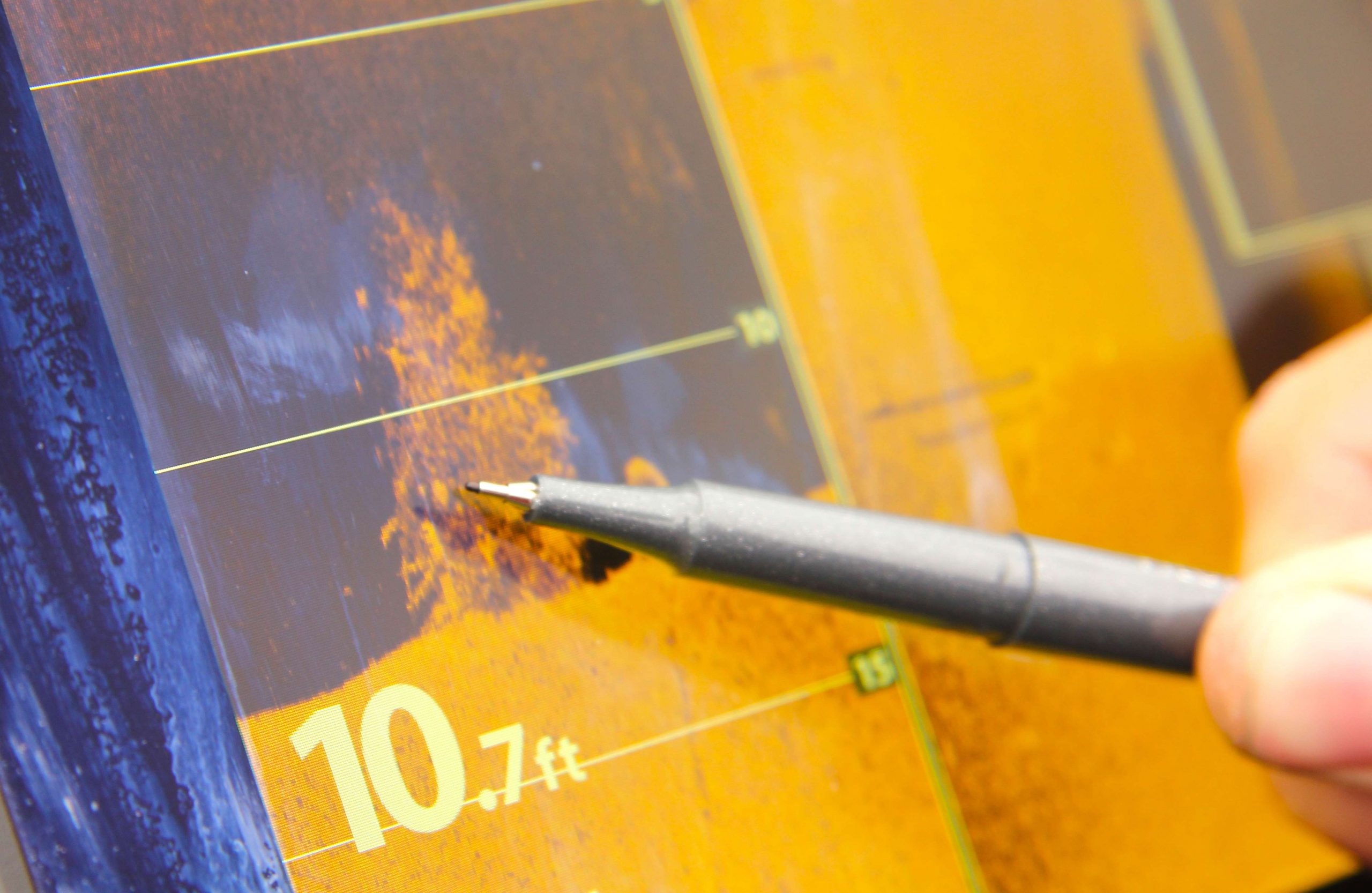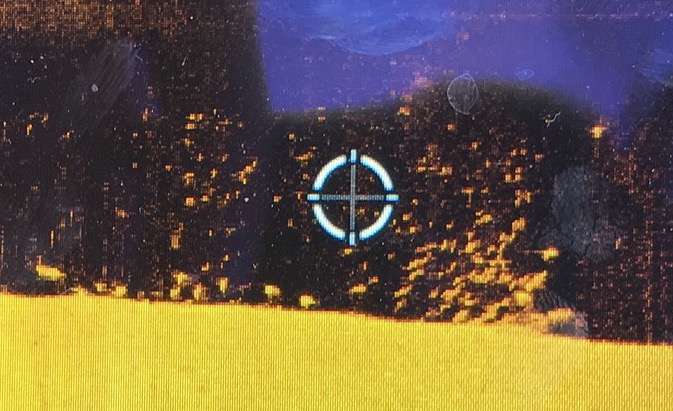
If there’s one topic in bass fishing that always generates questions, especially as the technology constantly evolves and changes, it would be how to use, and see fish, on your sonar screen.
So I thought this month I’d offer a few basic hints on how I look for “beans” on my “fish finder” – especially when bass make their way to that magical 15 to 25 feet deep range as water temps warm in summer.
Yep, I call them “beans” because bass appear as little bean-shaped blobs on the screens of more recently manufactured sonar machines like the Hummindbird HELIX 10 I use.
Down Scan and Side Scan
Until a few years ago, most sonar units only pointed a sonar cone from the transducer in a downward direction from the boat. However with the advent of side-scan or side-imaging, the sonar cone actually points more outward to the sides of the boat. Personally, I use both and study both on my screen at the same time.
I tend to idle along at 3.5 mph, looking mostly at down scan on the left side of my screen, and if I see a small school of “beans” next to a brushpile or stump, then I’ll study the side scan to gain a broader understanding of what all is there. I generally set the side imaging to read out 42-feet on each side of the boat.
Two examples of what you’re looking for
If you’ll look closely at the image with the ink pen, you’ll see a white “bean” in the middle of that brushpile sitting in 10.7 feet of water on my traditional down scan. The bass is right there on the left of the ink pen tip.


The image in yellow shows tons of small white specks. Those are white bass, which are smaller than largemouth bass, and typically travel in much larger schools. But if you’ll look near the bottom on this sidescan image, you’ll see 10 or 12 much larger “beans” – those are bass – they’re relating closer to the lake bottom – and rising-up to eat those smaller white bass.
I always tell people “if you can’t count ‘em, they’re probably not bass.” What I mean by that is bass are big enough that they’ll appear slightly spaced apart, so you can count them. But smaller white bass and other schooling fish are typically so tight – they’re just a cloud of specks – with very little target separation between each fish.
What lures are best for beans?
If a bass is tucked inside a brushpile like the one on the image with the ink pen – then I’ll throw a big Strike King 10-inch Bullworm on a 3/4-ounce Texas rig, or Owner’s jointed hard head. That lure will get down in the thick branches of the brushpile without getting hung up.
If they are schooling like those on the other image, I will actually cast a small spoon to the white bass the bass are feeding on, catch one or two of those to get the white bass fired-up, and then I’ll cast a deep diving Strike King 10 XD in a color called Barfish, which shows strong resemblance to the white bass, to catch the largemouth.
Lures don’t change dramatically, but sonar and the technology associated with fishing sure do. The good news is, the resolution and target separation to help you see those “beans” just keeps getting better. I hope these tips help you, and that you have a successful “picking” season this summer.

